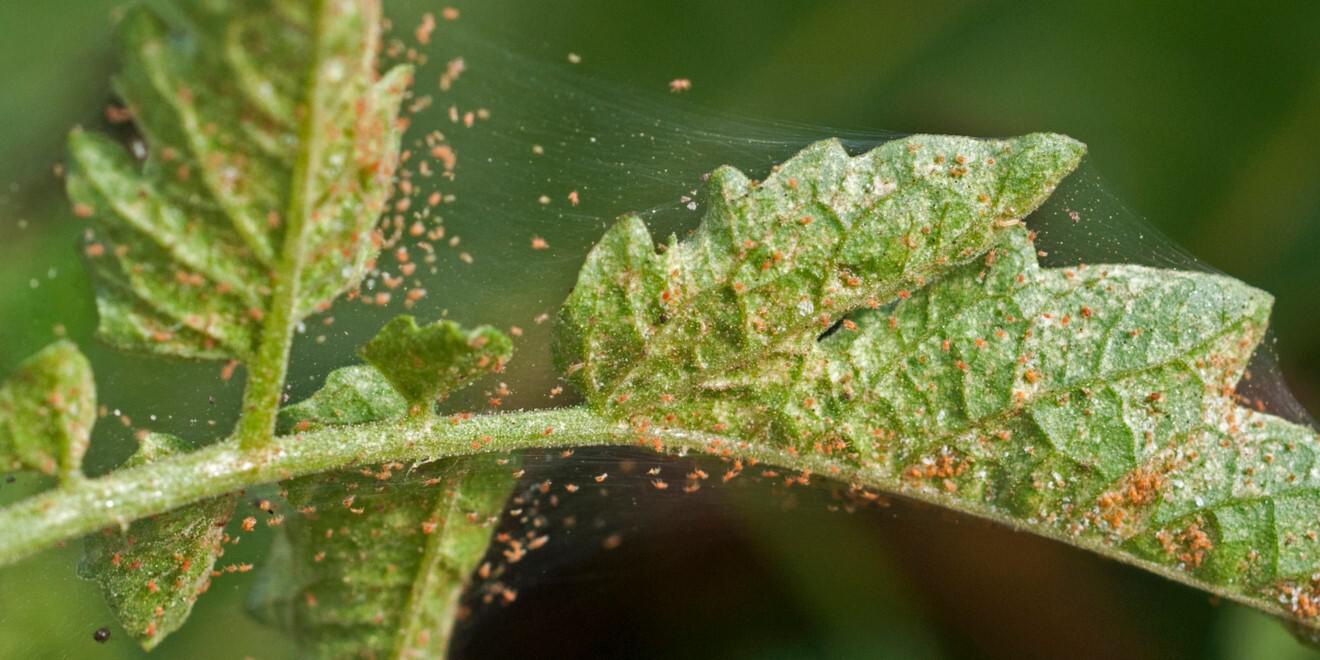All About Spider Mites and How to Help Manage Them
Posted by Mosquito Squad
August 8, 2025

Every house plant owner dreads the day a spider mite infestation occurs. These microscopic arachnids love to make their homes on the undersides of leaves and plants, where they spin silk webs and feed on plant sap. Spider mites aren’t harmful to people or pets, only your precious plants. They love younger plants and plants that are high in nitrogen content, such as vegetables and herbs that are common in gardens like tomato plants, kale and parsley. Spider mite damage can be detrimental to the health of plants, but you can treat and deter them with at-home and professional remedies.
So, What Are Spider Mites?
Spider mites are small arachnids that eat plant sap. They have piercing mouthparts that they use to get through plant tissue. This causes leaves to yellow as the mites feed on the chlorophyll in leaves. Spider mites are common in hot and dry environments where their natural predators, such as ladybugs, lacewings, thrips and scale insects, are limited. One of the telltale signs of spider mites is the presence of fine, silky webbing on plants that they use to move between leaves and different plants.
What Do Spider Mites Look Like?
Because they are microscopic, it’s very difficult to identify spider mites with the naked eye. If you looked through a magnifying glass at spider mites on plants, you would see that they have oval bodies, eight legs, and two red eyes. They can vary in color and are often green, red or yellow. There is also a dark area on the sides of female spider mites. Without a microscope, spider mites look like tiny moving dots on plants.
Do Spider Mites Bite?
Spider mites do not bite humans or pets. These pests feed exclusively on plant material by piercing plant cells and sucking out the contents. They can cause significant damage to houseplants, gardens, or crops. If you experience itching or irritation after handling infested plants, it’s likely due contact with plant debris rather than spider mite bites.
5 Early Signs of Spider Mites
You may be dealing with a spider mite infestation if you see:
- Visible moving dots on your plant stems and the underside of leaves.
- Thread-like webbing on your plants.
- New leaves cupping and curling.
- Yellow or whitish spots on leaves.
- Leaves that turn bronze and are starting to wilt or fall off your plant.
If you suspect spider mites, one way you can identify spider mites is by holding a white sheet of paper underneath your plant leaves and tapping them. If tiny specks appear on the paper and move around, those are spider mites. Gross!
Read more: Houseplant Pest Problem? Say Bye to the Bugs
Where Do Spider Mites Come From?
Spider mites most often enter homes and gardens through already infested plants or soil that you add to your environment. They are migratory and travel between surfaces or by clinging to plant foliage as it blows to new areas. Mites may hitch a ride on new plants, gardening tools, or even on clothing. Once introduced, spider mites can quickly multiply and spread from plant-to-plant if not controlled.
How to Get Rid of Spider Mites
After you’ve identified a spider mite infestation, it’s important to address them ASAP. A small infestation may cause minimal damage but if left untreated, it can grow into a large infestation and become difficult to control.
If spider mites are on indoor plants, the first step is to remove the infested plants from your home and keep them away from plants that aren’t plagued with spider mites. For small infestations, a strong stream of water can go a long way. Rinse every part of the plant’s foliage to dislodge the spider mites and knock them off the plant into soapy water. Soapy water will suffocate the mites.
After removing spider mites, apply one of these spider mite treatments to target mites you may have missed and deter them from returning. You can use:
- Neem oil – Mix neem oil with water and spray plants. Neem oil is toxic to spider mites.
- Rubbing alcohol – Combine 1 cup of rubbing alcohol with 4 cups of water in a spray bottle. Spray plants to dehydrate mites. Be sure to first test this method on a small part of the plant and make sure the plant isn’t sensitive to the spray.
- Soapy water – Use water mixed with a few drops of soap to suffocate spider mites.
- Diatomaceous earth – Sprinkle this around plants to dehydrate mites on contact.
How to Prevent Spider Mites
To deter spider mites, simple spider mite prevention techniques include:
- Regularly inspecting plants, especially the undersides of leaves.
- Quarantining new plants and then monitoring them for at least one week
- Spraying neem oil when introducing new plants to your space.
- Sprinkling diatomaceous earth on new soil.
- Increasing humidity levels. Spider mites thrive in dry conditions.
- Getting a professional yard spray to help kill existing pests on contact and continue to deter them.
The best spider mite infestation is one that you stop before it even starts. By promoting an environment that these pests don’t like and properly caring for your plants, you can deter spider mites from making your plants their home.
Fight the Mite with Professional Services
Mosquito Squad Plus® is here to help make sure your home and house plants are protected from pest infestations. Rely on your local pros to deter pests from making their way inside and wreaking havoc. Our barrier treatment services kill pests on contact and continue to deter them from your space for up to 21 days after service.
To learn more about spider mite control, call your local Squad® at (877) 332-2239 or request a cost-free quote online.
